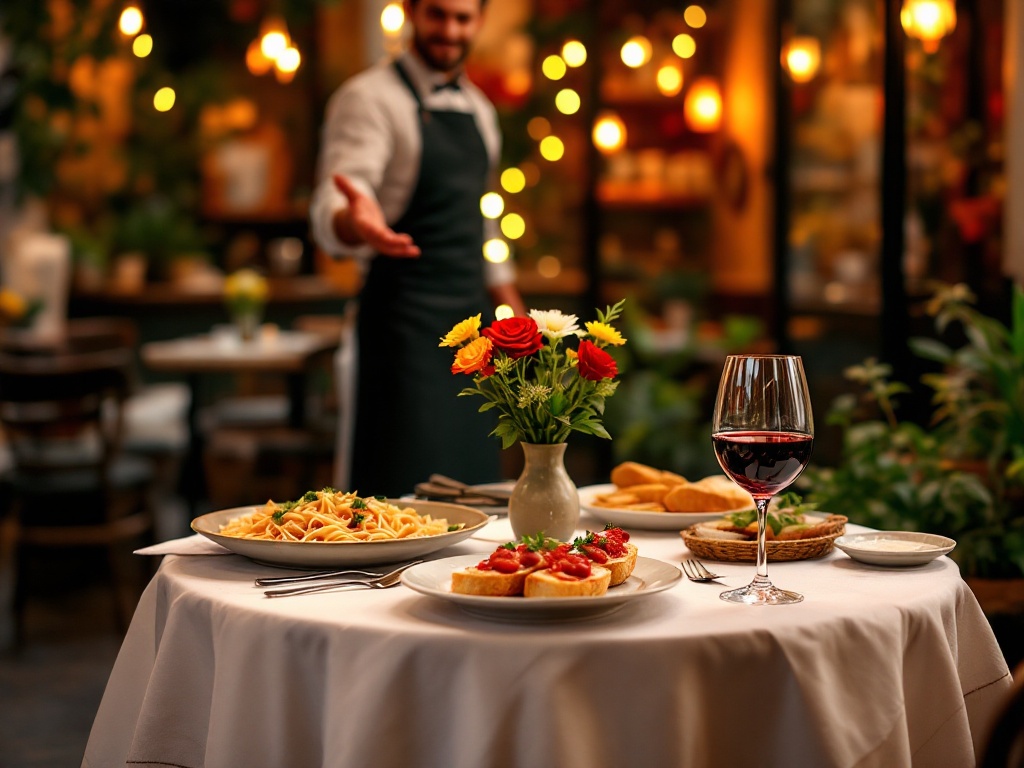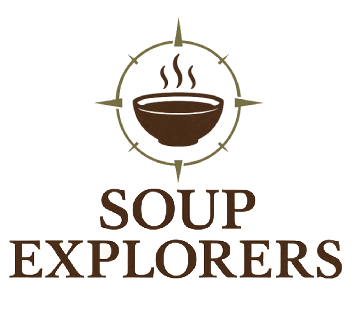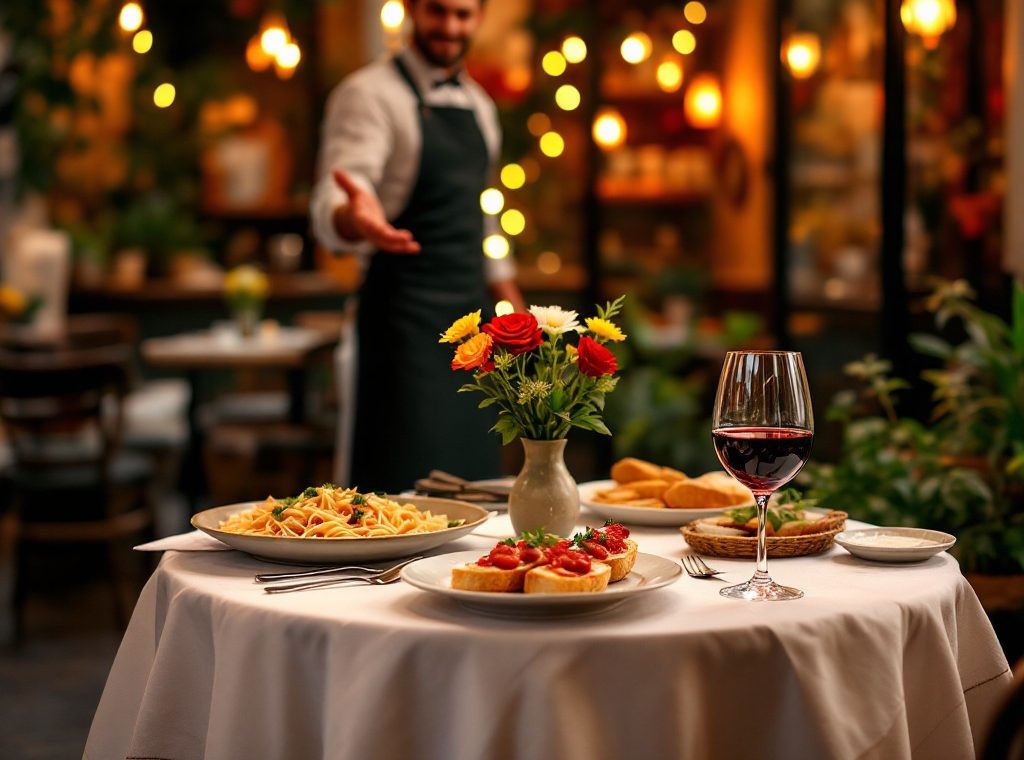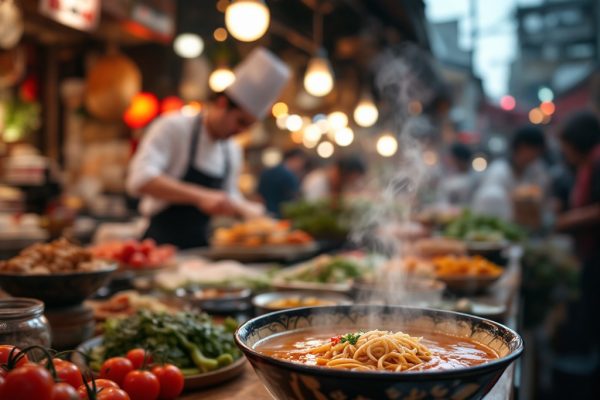How to Order Food in Italian: A Few Simple Phrases to Learn Before Travel
Dream of indulging in authentic Italian cuisine? Master key phrases like “Vorrei ordinare” (I would like to order) and “Cosa mi consiglia?” (What do you recommend?) to elevate your dining experience. This guide provides essential Italian phrases, from requesting a menu (“Posso avere il menu, per favore?”) to navigating the traditional menu structure (antipasti, primi, secondi, contorni, and dolci). Learn how to communicate dietary needs and preferences, ensuring a delicious and personalized Italian culinary adventure. Start speaking Italian now!
Important information

- To ask for the menu, say “Posso avere il menu, per favore?” (Can I have the menu, please?).
- Use “Vorrei…” (I would like…) to express your order, followed by “per favore” (please).
- Italian menus are structured: Antipasti (appetizers), Primi Piatti (first course like pasta), Secondi Piatti (main course), Contorni (side dishes), and Dolci (desserts).
- For recommendations, ask “Cosa mi consiglia?” (What do you recommend?).
- Communicate dietary restrictions with “Sono allergico/a a…” (I am allergic to…) or “Non mangio…” (I don’t eat…).
Essential Italian Phrases for Ordering Food
Requesting the menu: use “Posso avere il menu, per favore?”.
Ready to order: signal your server with “Vorrei ordinare”.
Expressing desires: use “Vorrei…” (I would like…).
Being polite: add “Per favore” (please) to any request.
Asking for recommendations: try “Cosa mi consiglia?”.
Greetings: use “Buongiorno” (good day) and “Buonasera” (good evening).
Casual greetings: “Ciao” works for informal hellos and goodbyes.
Using Polite Phrases to Ease Pronunciation
A little politeness goes a long way, especially when grappling with pronunciation. Using phrases like “Per favore” (please) and “Grazie” (thank you) demonstrates respect and enhances the dining experience. Even if your pronunciation isn’t perfect, the effort is appreciated.
Essential Italian Food Phrases for Navigating Your Travels
To request a menu, politely say, “Posso avere il menu, per favore?” (Can I have the menu, please?).
When you’re ready to order, use the phrase “Vorrei ordinare” (I would like to order). Remember, “Vorrei…” is useful for expressing desires (I would like…).
Always add “Per favore” (Please) to your requests.
If you enjoy your meal, express your delight with “È delizioso!” (It’s delicious!).
Compliment the chef by saying “Complimenti al cuoco!” (Kudos to the chef!).
For recommendations, ask “Cosa mi consiglia?” (What do you recommend?).
Understanding the Italian Menu
Navigating an Italian menu is key to a truly enjoyable dining experience. Traditional Italian menus follow a structured format designed to guide your culinary journey.
Begin with Antipasti, the enticing appetizers designed to awaken your palate.
Next, explore the Primi Piatti, the first courses, often featuring comforting pasta dishes or flavorful soups.
Savor the Secondi Piatti, the main courses showcasing the richness of Italian cuisine with delectable meat or fish dishes.
Enhance your meal with the Contorni, carefully selected side dishes that perfectly complement the main courses.
Finally, indulge in the delightful sweetness of Dolci, the desserts that provide a fitting end to your Italian feast.
To start, politely request the menu by saying: “Posso avere il menu, per favore?“. When ready to order, confidently use the phrase “Vorrei ordinare…” (I would like to order…).
Become familiar with these key culinary terms to order with confidence:
- Al forno: baked.
- Alla griglia: grilled.
- Fritto: fried.
Understanding these cooking methods allows you to personalize your dining experience. Don’t hesitate to ask your server for more details about ingredients or portion sizes.
How to Read an Italian Menu
Navigating an Italian menu is easy once you understand its structure.
Begin with antipasti, the enticing appetizers.
Next, savor a primo, the first course, perhaps a pasta or risotto dish.
Then comes the secondo, your main course, often featuring meat or fish.
Complement your main dish with a contorno, a side dish.
Finally, indulge in a dolci, a delectable dessert.
If you’re feeling overwhelmed, simply ask “Cosa mi consiglia?” which translates to “What do you recommend?” and receive expert guidance.
Key Menu Vocabulary for Dining Out in Italy
Start your culinary journey with antipasto, a delightful appetizer to awaken your taste buds.
Proceed to the primo, the first course, often a pasta or risotto dish.
Next, relish the secondo, the main course, typically featuring meat or fish.
Enhance your main course with a contorno, a flavorful side dish.
Finally, indulge in a sweet treat with some dolce for dessert.
When you’re ready to pay, simply ask for il conto.
If you need anything during your meal, remember these words: pane (bread) and acqua (water).
For beverages, vino means wine.
Birra is the word for beer.
Buon appetito!
Ordering Food and Drinks in an Italian Restaurant
Start your Italian dining experience with a warm “Buongiorno” (during the day) or “Buonasera” (in the evening). Then, politely request the menu: “Posso avere il menu, per favore?”.
When ready to order, use “Vorrei ordinare…” followed by the dish (e.g., “Vorrei ordinare la pasta carbonara”). Specify the quantity: “due” for two, or “uno/una/un” for one. Drinks follow the same structure: “Vorrei una bottiglia di acqua” (a bottle of water) or “Vorrei un bicchiere di vino rosso” (a glass of red wine). Conclude with “Grazie”.
Remember, “Per favore” (please) and “Grazie” (thank you) are essential. To request the bill, simply say, “Il conto, per favore?”.
Your waiter may ask, “Cosa vuoi ordinare?”. Respond with “Vorrei…” and your choice. If they say, “Sì, prego?”, they’re ready to take your order. “Posso avere… per favore?” is another polite option. “Vorrei…” remains the standard ordering phrase.
When ordering water, specify “acqua frizzante” for sparkling or “acqua naturale” for still water. Wine choices include “vino rosso” (red wine), “vino bianco” (white wine), or “vino rosato” (rosé wine). Consider an “aperitivo,” a pre-dinner drink.
Inform your waiter about any allergies or dietary needs: “Sono allergico/a a…” is crucial for your well-being.
For steak preferences, “ben cotto” means well-done, while “al sangue” means rare. Don’t hesitate to express your needs.
Polite Requests: How to Order Food in Italian
Start your order politely with “Vorrei” (I would like), followed by the dish you desire. For example, say “Vorrei una pizza“.
Enhance your politeness by adding “per favore” (please) at the end. For instance, “Vorrei una pizza, per favore” translates to “I would like a pizza, please”.
If you need the menu first, ask “Posso avere il menu, per favore?” meaning “Can I have the menu, please?”.
Once you’re ready, formally begin your order by stating “Vorrei ordinare…” (I would like to order…).
To discover new dishes, inquire “Cosa mi consiglia?” which translates to “What do you recommend?”.
Using these phrases will enhance your dining experience.
Common Restaurant Phrases: Cosa vuoi ordinare?, Si, prego?, Posso avere… per favore, Vorrei..
Getting started is easy! Use “Cosa vuoi ordinare?” (What do you want to order?).
Need help? A simple “Sì, prego?” (Yes, please?) will get attention.
Ready to order? Use “Posso avere… per favore” (Can I have… please?) or “Vorrei..” (I would like..).
These phrases will enhance your Italian dining experience.
Ordering Drinks: Water, Wine, and Aperitivo
Ordering drinks in Italy is easy. Ask for “acqua, per favore” (water, please). Specify “frizzante” for sparkling or “naturale” for still water. Fancy wine? A glass of red or white is “un bicchiere di vino rosso/bianco.” For a whole bottle, request “una bottiglia di vino.” In the mood for a cocktail? Simply name it—like “un Aperol Spritz.” And remember, adding “per favore” is always appreciated.
Communicating Dietary Restrictions and Food Allergies
Communicating dietary needs in Italian restaurants ensures both safety and enjoyment. For allergies, clearly state “Sono allergico/a a…” (I am allergic to…) followed by the specific allergen. For example, “Sono allergico/a al latte” (I am allergic to milk). This is crucial for preventing allergic reactions. For dietary preferences, use “Non mangio…” (I don’t eat…). For instance, “Non mangio carne” (I don’t eat meat) or “Non mangio pesce” (I don’t eat fish). This ensures a meal tailored to your preferences.
Making Special Requests: Cooking Methods and Preferences
If you crave a well-done steak, order it “ben cotto“. For a medium steak, ask for “media cottura“.
While “al dente” usually refers to firm pasta, “al sangue” will get you a rare steak.
For vegetables, specify your preferred cooking method: grilled, steamed, or roasted.
Feel free to customize your dish further by omitting unwanted ingredients or requesting additions. Clear communication ensures a delicious, personalized meal.














